The Color of Desire
Sex and politics are tricky to untangle. In “The Color of Desire,” curator Jessica Kwok explores how racial fetishization manifests in two visual mediums: mid-century ethnographic film and contemporary video art. Margaret Mead and Gregory Bateson’s Trance and Dance in Bali (1952) and Tuan Andrew Nguyen’s The Specter of Ancestors Becoming (2019) are created from two very different perspectives—the former is a product of Western ethnography and imperialism, while the latter is a statement of south-south solidarity. But Kwok carefully attends to the ways both works dislocate sound and movement to project Asian women as hyper-sexualized others. This breakage of the spectral from the aural, she argues, has the power to destabilize the imperial gaze and generate new ways of knowing.
– Ruba Katrib, 2023 EIR
The political terrain of desire and love is one that both fascinates and overwhelms me, as I have spent a lot of time trying to mentally untangle the nuanced implications of racial fetishization in our most intimate spheres. What engenders these fetishes and what apparatuses bolster them? Pornography, through the device of vision, is a form of cultural production that reflects society’s complex relationship to sexual desire. It is simultaneously through this device of vision that pornography “seeks to control, contain, and master the field of the Other.”1 The image of the eroticized Other has emerged from a predominately Western motivation to “know” those who are unfamiliar, and at the same time, demonstrates an investment in wielding institutional power. “Race supersedes any other identification even for biracial Asian/American women in pornography,”2 states Celine Parreñas Shimizu in The Hypersexuality of Race.
During the summer I took a short course called Ethnopornography: Race, Erotics, and Domination at the Brooklyn Institute for Social Research. I was particularly interested in an ethnographic film called Trance and Dance in Bali (1952) by American-English newlyweds Margaret Mead and Gregory Bateson, originally shot from 1936–1939 in the town of Pagoetan, on the island of Bali in Indonesia. Funded by the Committee for Dementia Praecox, as schizophrenia was then known, their fieldwork was aimed at proving their theory that Balinese culture was one that was schizoid, where individuals were cut off from interpersonal relationships, and thus had a weaker sense of self. They attributed this pathology to Balinese mothers, who they deemed as unloving and frigid, and therefore raised children who suffered this condition. In true patriarchal fashion, this conclusion then “bolstered a trend in the United States to criticize women for the neuroses of their sons.”3 Trance dancing was seen as a way to cope with their disorder and the logic of U.S. institutions was that an understanding of this would lead to developing child-rearing methods that would reduce the prevalence of schizophrenia.4
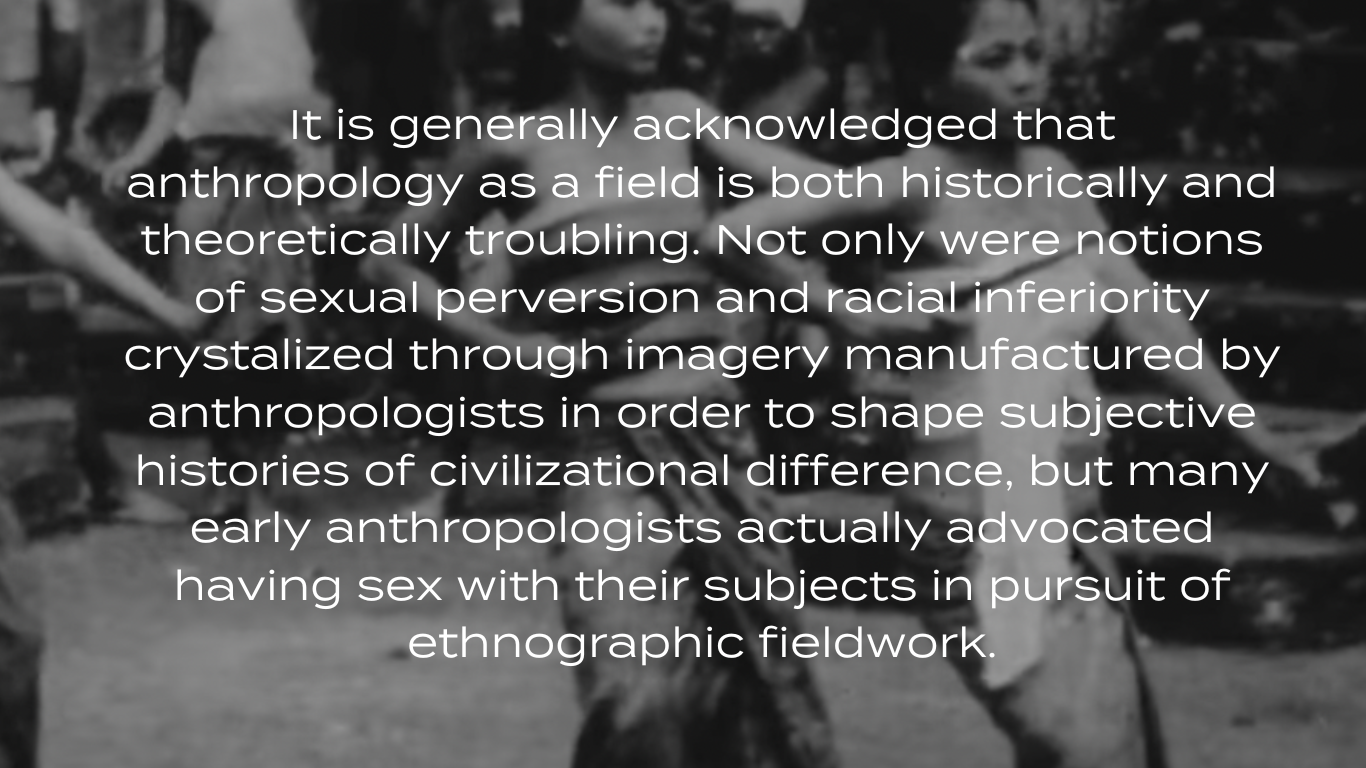
In the film, young Balinese women and men are shown performing the ceremonial dramatari calonarang, a ritual performance that reaches its culmination when the dancers ecstatically fall into violent trance seizures and stab themselves with a kris (jagged-blade daggers) in their chests, but do not draw blood. Prepubescent Balinese girls, with their long wild free-flowing hair, are portrayed as the epitome of exotic Otherness. They vacillate between various convulsive states of unconsciousness as they are revived from trance with incense and holy water by village priests. Their behavior appears pathological and erotic, an underlying horniness to their frenetic state. “In attempting to represent this [sexual energy] as ‘ethos,’ [Mead and Bateson] fell back on the classic Western narrative that links sexuality to hysteria,”5 writes Catherine Russell in Experimental Ethnography.
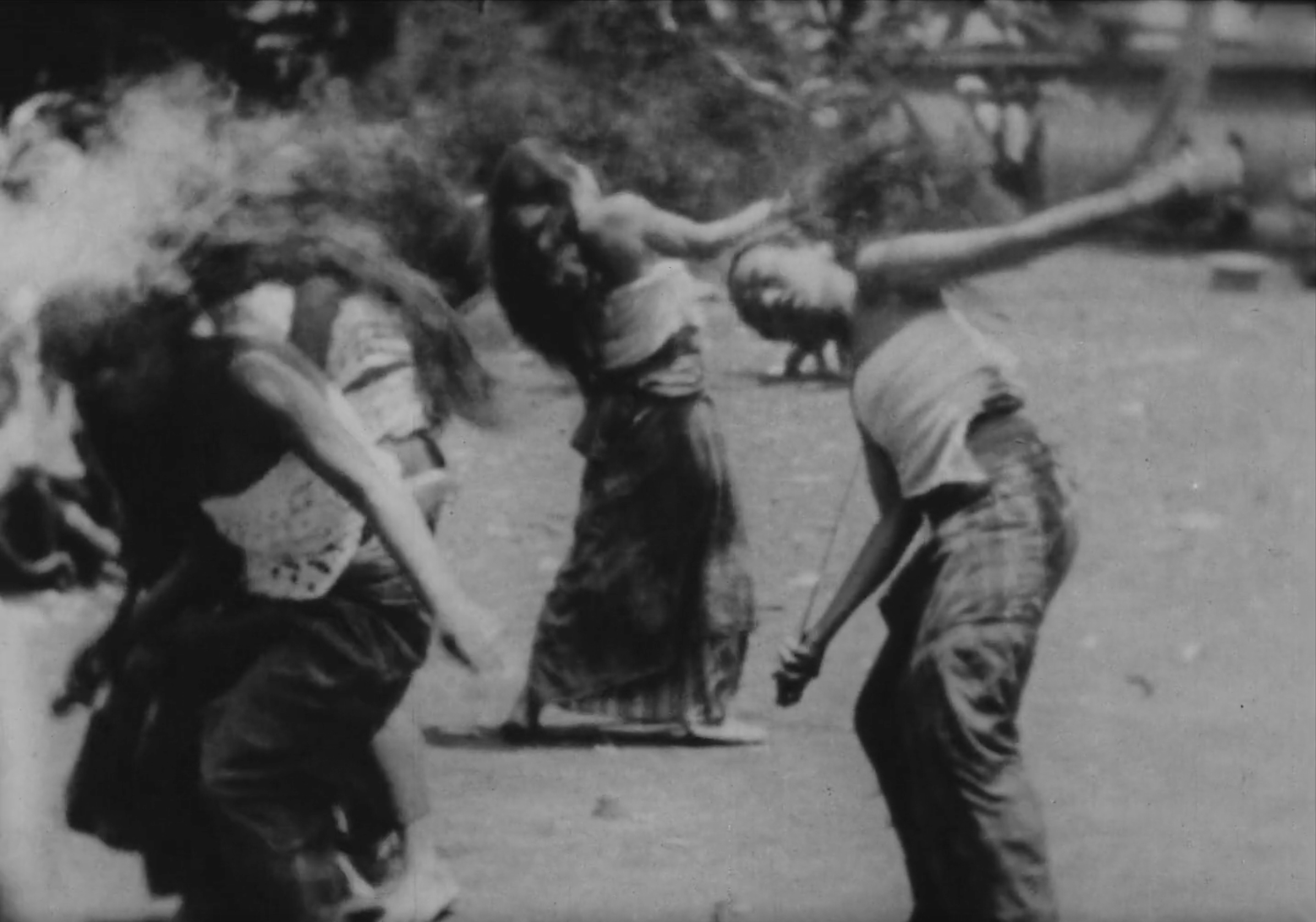
Trance and Dance in Bali is not an authentic presentation of the Balinese ceremony. The film fails to note that this research took place during the Dutch colonial period in Indonesia and that Bateson was working with an old hand-wound camera that was only able to capture silent takes in very short increments. The footage was the result of two separate commissioned daytime performances, by dancers who usually performed this dramaturgy for Western tourists and expatriates, although the ritual is traditionally enacted at night.6 Furthermore, the calonarang was not normally a dance performed by women. All of this contextual information is obfuscated by Mead and Bateson in the film.
As Bateson’s camera was unable to record audio, a musical score was transposed on top, burying important sonic details such as the chatter of the young girls and the laughter of the older women. Mead’s authoritative voiceover feels disconnected from the image, which serves to further emphasize the viewer’s gaze on the bodies as they move in haunting slow motion. The research subjects in Trance and Dance are aware of the camera, so we are unable to know what part of the trance is real and what part is performative. Fatimah Tobing Rony states in The Third Eye, “The violence in trance is controlled: literally so as it is commissioned, and the footage can be poured over, rewound and edited to be brought back to the United States.”7 As such, we see the violence of the colonial image of the sexually ravished native woman from the tropics perpetuated in a way that has been crafted to cater to voyeuristic impulse, the way that it similarly is in pornography.
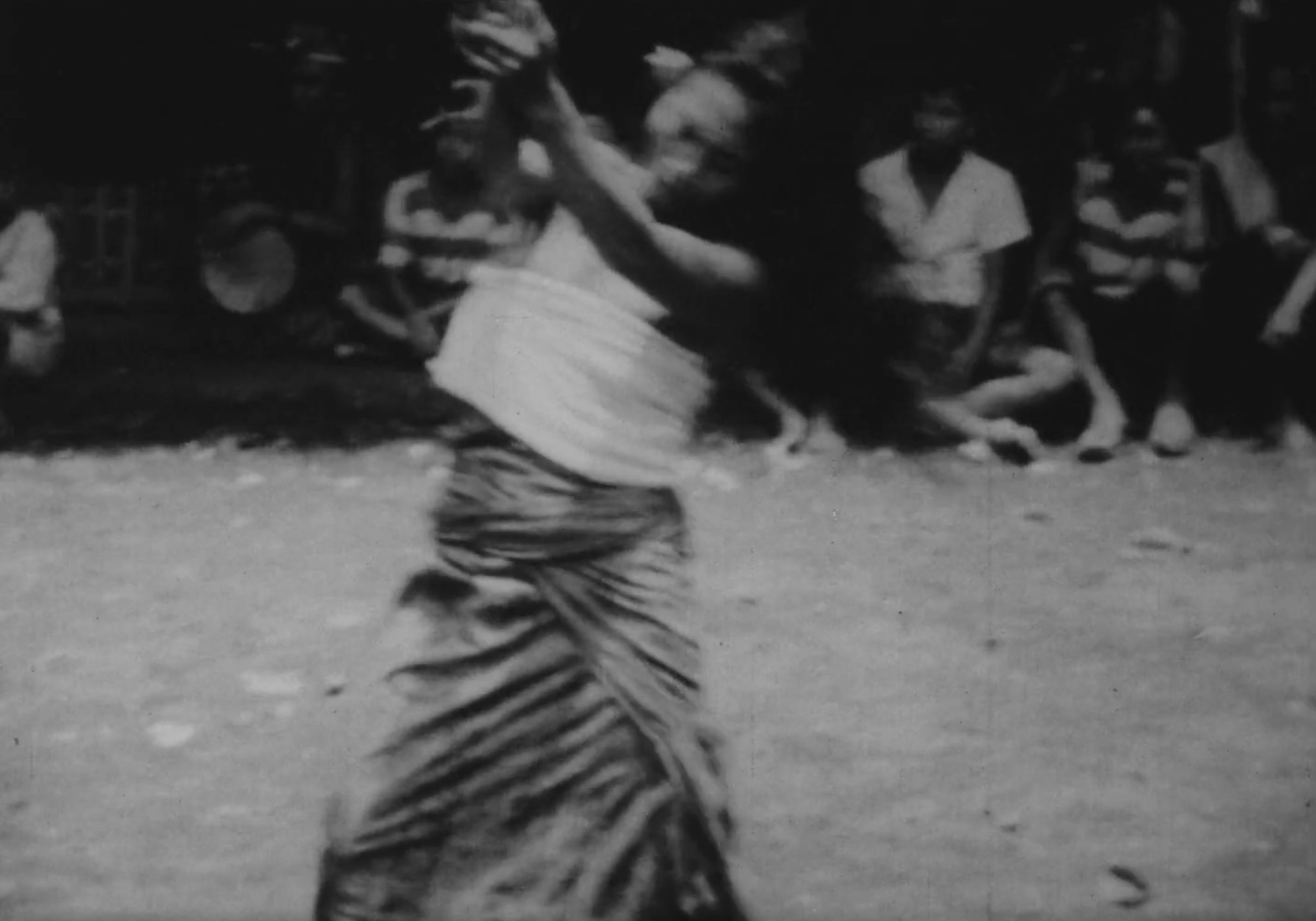
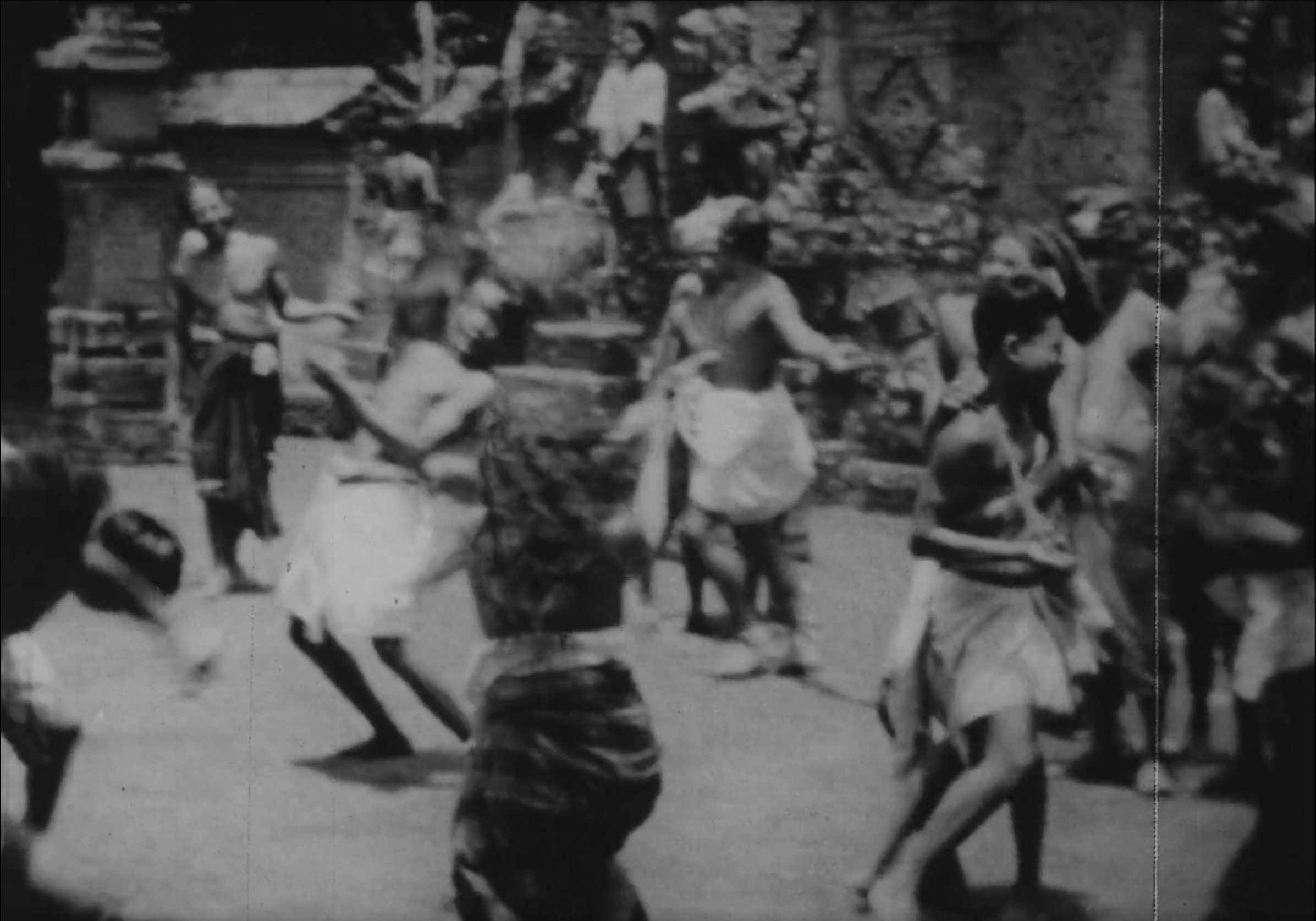
It is generally acknowledged that anthropology as a field is both historically and theoretically troubling. Not only were notions of sexual perversion and racial inferiority crystalized through imagery manufactured by anthropologists in order to shape subjective histories of civilizational difference, but many early anthropologists actually advocated having sex with their subjects in pursuit of ethnographic fieldwork.8 Yet colonial encounters that led to the stereotyping and commodification of the indigenous woman’s body are not just knowledge-driven, as they are in anthropology. Race fetishization is also a symptom of Western imperialism as it pertains to territorial domination. “Little brown fucking machines powered by rice,” often abbreviated to LBFM, is a term coined by men in the U.S. military to sexually objectify Filipina women, but quickly spread to encompass all women in occupied terrains of Southeast Asia. Forced into sex work, these women enabled male soldiers to be the best they possibly could be in combat by acting as an outlet for sexual aggression and release. As such, the constructed projection of the hyper-sexualized Asian woman lives on in history, and that history is imbued in the sexuality seen in different kinds of representational regimes.
Experimental video can serve an ethnographic purpose cloaked beneath the practice of art. This isn’t to say that it does something insidious but more so that it too is able to construct an image that then promotes a certain subjective understanding of culture. As a fan of Tuan Andrew Nguyen’s practice, I was excited to see his recent exhibition at the New Museum. The Specter of Ancestors Becoming (2019) is a deeply insightful work that made me consider how Asian women can still be represented as sexualized Others, even in the context of a south-south solidarity. It also prompted me to think through ways that interracial power dynamics can cut laterally. This four-channel video installation creates an intimate space to tell fragmented stories of the Senegalese-Vietnamese community often omitted from historiography. These constructed memories are told through three acts read by three writers, who are the descendants of Senegalese men and Vietnamese women.
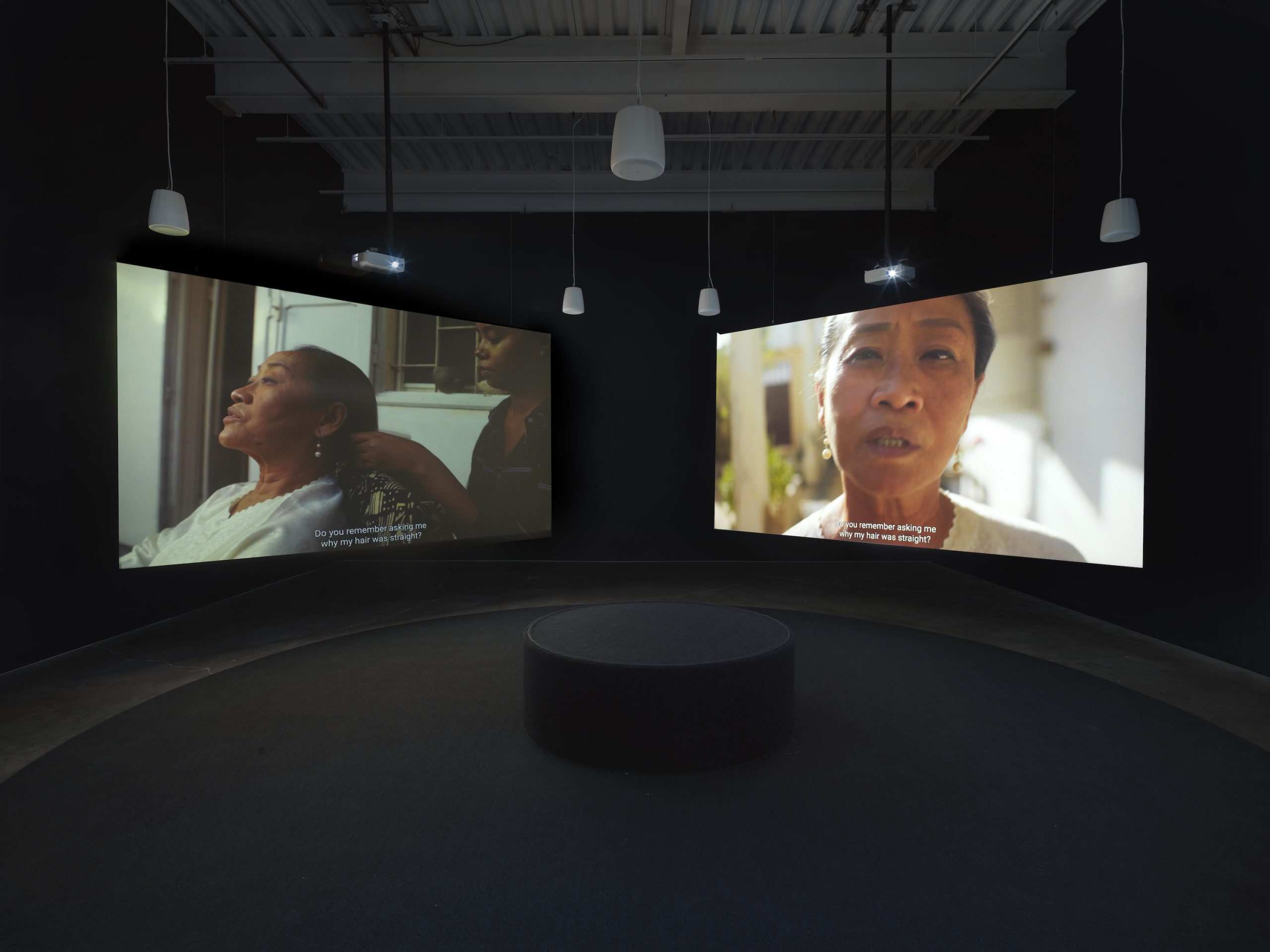
During the Vietnamese uprising from 1946 until 1954, Senegalese soldiers known as tirailleurs were deployed to Indochina to fight for the French, who had colonized much of West Africa. Many of them fell in love, got married, and had children with local women, and when the war was over, returned to Senegal—some with their wives, and others just with their children—nevertheless raising their families as Senegalese. As colonized subjects, the bodies of the Senegalese soldiers who had been conscripted to expand their Western colonizer’s empire in Southeast Asia were disposable, like the bodies of the Vietnamese women, who were referred to as con gái. In Vietnamese, this translates to “little girl”, and French soldiers as well as Senegalese tirailleurs commonly used the term as shorthand to describe the gendered-sexual system between French men and Vietnamese women as concubines, paramours, and domestic workers. So what are the implications of the convergence of two disposable bodies in the aftermath of colonial legacy? Through their forced displacement and migration, the women who left Vietnam for Senegal to follow their husbands not only find their bodies disposable, but with that, the erasure of their culture and history reinforces their subordinate position within patriarchy.
“Experimental video can serve an ethnographic purpose cloaked beneath the practice of art. This isn’t to say that it does something insidious but more so that it too is able to construct an image that then promotes a certain subjective understanding of culture.”
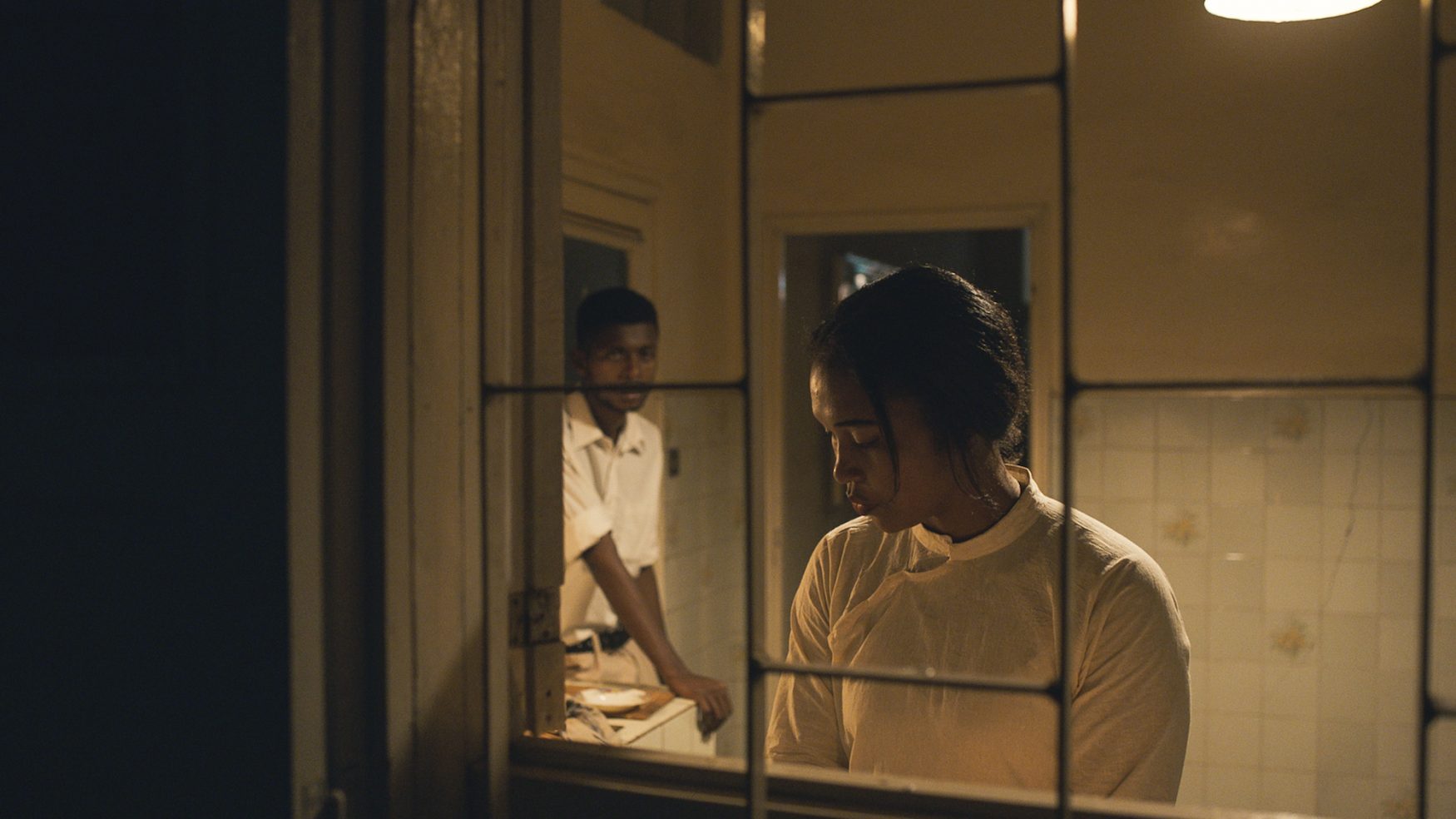
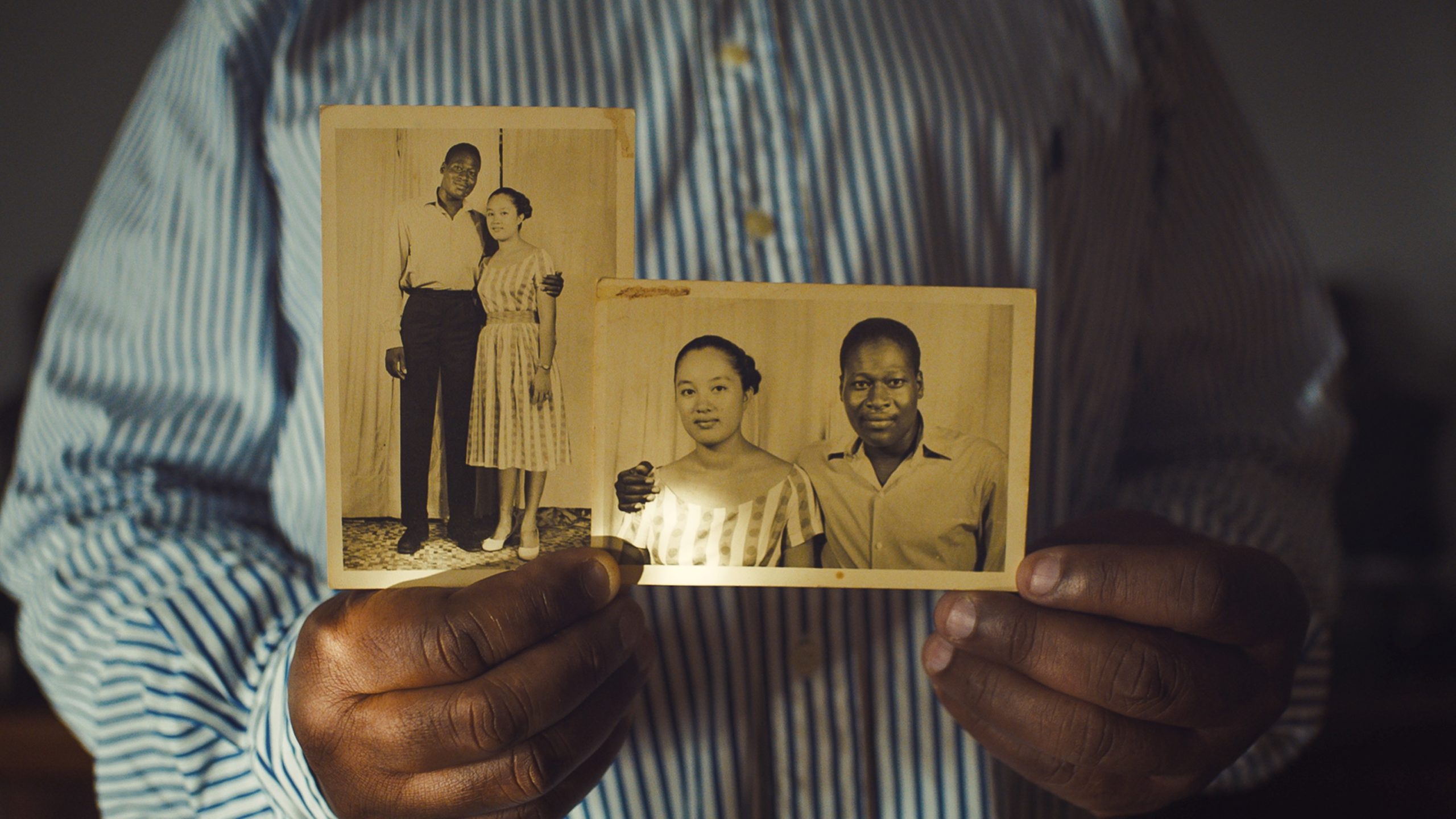
Anne Anlin Cheng often talks about shifting our attention away from the visibility of race to its visuality.9 The third act of The Specter of Ancestors Becoming shows a young woman Fatima tenderly combing her grandmother Maam’s long black hair as Merry Beye Diouf recalls and creates imagined memories, collapsing time and perspectives as a way to reflect upon inherited trauma and loss over generations. Of the three storylines, this is the one centered on only women. The choice to ground the visuality of the scene in the activity of hair-combing was curious to me, as the fetishization of Asian women is notoriously reduced to one or all of three parts: their eyes, skin, and hair. Maam asks Fatima, “Do you remember asking me why my hair was straight?,” highlighting the ways that the Asian female body is produced through hyper-sexuality even as that body is rendered obscured and expendable in its power relationships. After all, Maam is a woman who was brought to Senegal by her husband and thrust into a culture that was not her own.
All three acts are narrated by their writers, who we see reading their scripts on one of the four channel projections. The actors playing the characters of their family members become ventriloquists for those speaking the dialogue. For me, this misalignment between sound and image created the same effect as it did in Trance and Dance in Bali, where I was drawn to the sensual choreography of the bodily gestures, the movement of the mouths, and the parting of the lips, in isolation. Even though the audio is arguably an essential component of the work, the gaze on the body becomes the focal point.
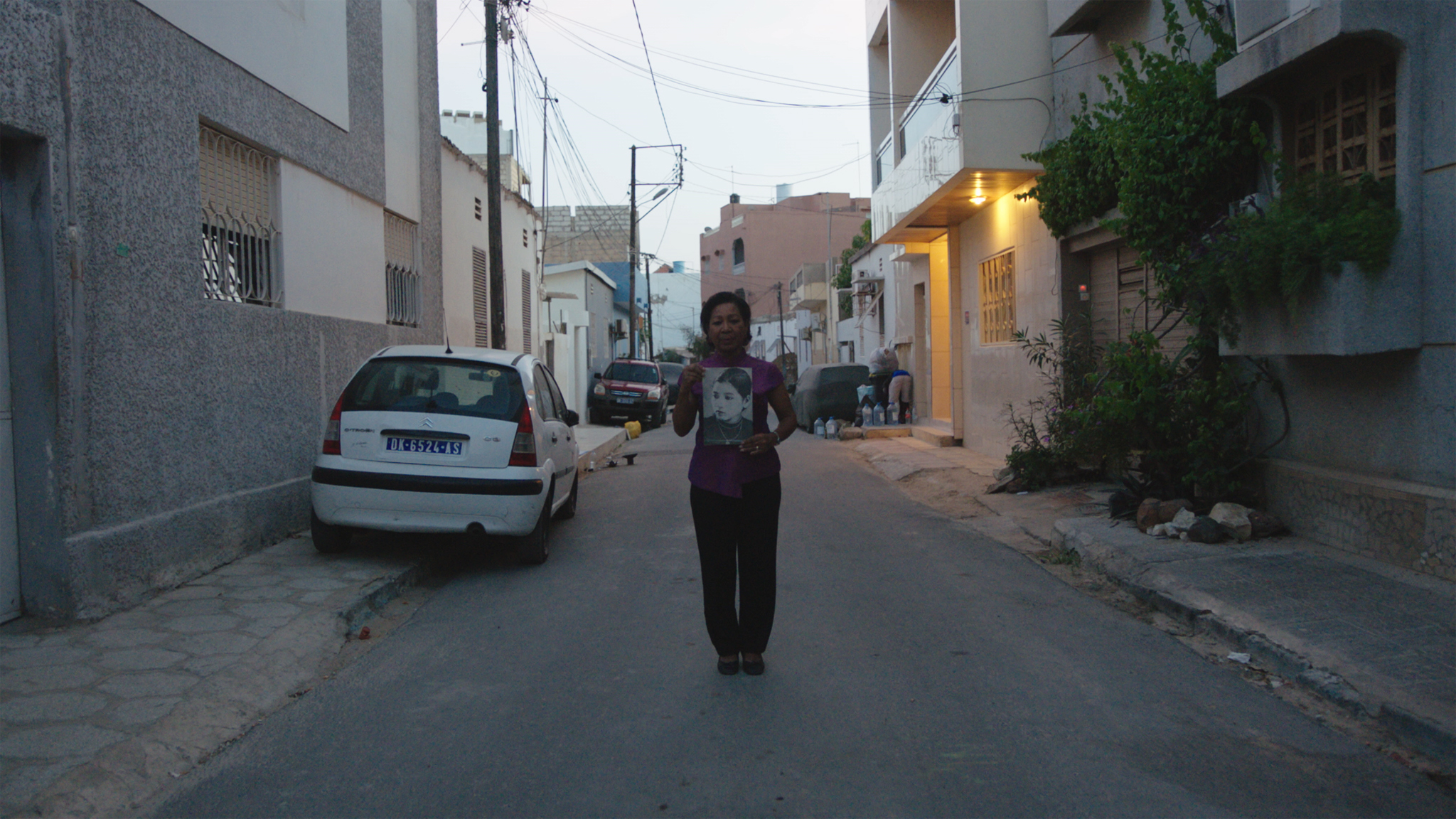
Both of these films, Trance and Dance in Bali and The Specter of Ancestors Becoming, are reminders that sexualized depictions of women can exist in softer ways than the explicit rendering of pornography. But these depictions are a kind of pornography in a sense, too. Although one is an ethnographic work and the other is video artwork, both are constructions where culture and women are represented from different fractured perspectives. This is not to say these films were made with the intention to cause arousal, but I think they do something that pornography does, insofar as they produce eroticized material regarding people (women) who are deemed Other from the gaze of those who are likely to observe the image. The deliberate dislocation between sound and movement binds the raced woman to their projections as a hyper-sexualized body, and these projections penetrate in varying capacities depending on the viewer and their own lens. In the case of The Specter of Ancestors Becoming, this slippage could also become emancipatory—if the characters speak the language of the colonizer but their bodies are performing something of their own, there can be space for a reclamation of the image. I don’t think that the work necessarily does this, but its potential to rupture what we see, what we know, and what we hear, thus allowing for unexpected affinities and a different sexual visualization to be harnessed, is to me, what could make this piece even more layered and dynamic from a feminist perspective.
My readings of these works are informed by my consciousness of the gaze upon my own racialized body—how I wish to be perceived but not perceived, how I feel simultaneously desired yet undesirable, and how I both take pleasure in and also experience injury through my visuality. How do I consent to my own image that has been projected upon me? In writing this, I have been thinking about how vision can be destabilized through the breakage of unity between sound and image, and how this could then contort the gaze into new ways of knowing. It is only when there are new ways of knowing that the fetishized image is able to crack open these polarities, to question the frameworks that scaffold its perception and to reclaim sexual fantasy as beautiful and powerful resistance.
Jessica Kwok is a curator based in New York. She is currently Associate Curator at Storefront for Art and Architecture.
NOTES
1. Catherine Russell, “Zoology, Pornography, Ethnography,” in Experimental Ethnography (Durham, N.C.: Duke University Press, 1999), 120.
2. Celine Parreñas Shimizu, “Queens of Anal, Double, Triple, and the Gangbang,” in The Hypersexuality of Race (Durham, N.C.: Duke University Press, 2007), 163.
3. Fatimah Tobing Rony, “The Photogenic Cannot Be Tamed: Margaret Mead and Gregory Bateson’s Trance and Dance in Bali,” in The Third Eye: Race, Cinema, and Ethnographic Spectacle (Durham, N.C.: Duke University Press, 2004), 9.
4. Catherine Russell, “Ecstatic Ethnography,” in Experimental Ethnography, 200.
5. Ibid.
6. Faye Ginsburg, “‘Now Watch this Very Carefully …’ The Ironies and Afterlife of Margaret Mead’s Visual Anthropology,” The Scholar and Feminist Outline 1, no. 2 (Winter 2003).
7. Rony, 15.
8. Stephanie Nelson, “Intersections of eros and ethnography,” Text and Performance Quarterly 18, no. 1 (1998): 1–21.
9. Anne Anlin Cheng and Tom Holert, “Do You See It? Well, It Doesn’t See You!,” e-flux journal 65 (May 2015).